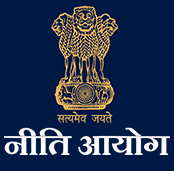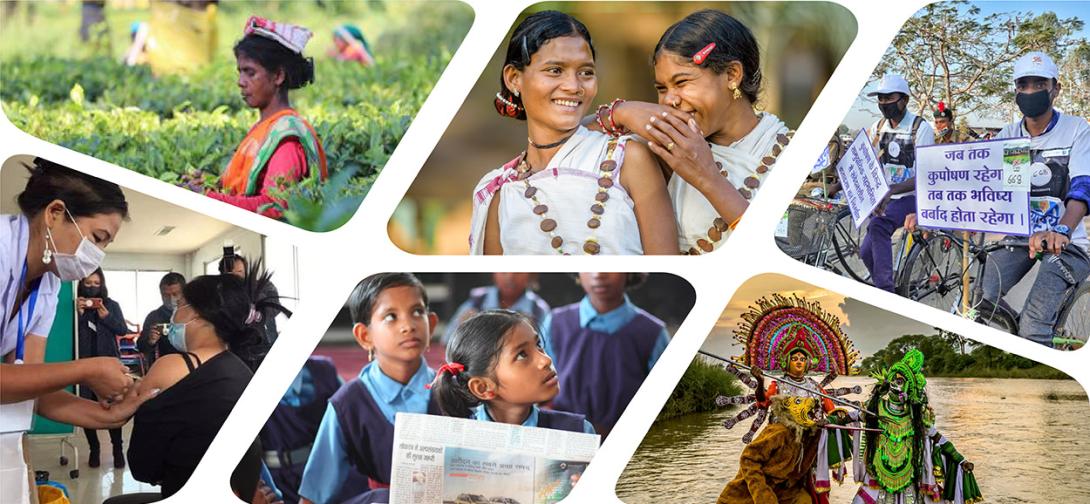Combating Malnutrition Requires Granular Approach
Malnutrition rates have been declining in India, but the absolute numbers of stunted (short for age) (46.6 million), wasted (low weight for height) (25.5 million), and anaemic children (73 million under-3 children) are still a concern. With a prodigious challenge of triple burden of malnutrition -- under-nutrition, over-nutrition and micro-nutrient malnutrition -- facing India and due to the cultural and geographical variance across states, combating malnutrition requires a granular approach.
Achieving the World Health Assembly’s Global Nutrition Target of a 40% reduction in the number of under-5 stunted children and to reduce wasting to less than 5% by 2025 is challenging. According to the recent CNNS survey, 35% of under-5 children in India were stunted while 17% were wasted. Hence, efforts to reduce malnutrition must be accelerated.
Malnutrition is multi-factorial, caused by the lack of wholesome and nutritious food, poor hygiene and sanitation, frequent illness, poor care practices, and lack of access to services. Most of these are preventable or treatable through effective health and nutrition interventions. Maternal literacy, status of women in society, economic and social factors including poverty and income distribution are strong determinants of child health and influence care practices at home. Hence, we find higher levels of malnutrition in rural areas, especially among ST families.
In a study published in Lancet in 2013, researchers found that scaling up proven nutritional interventions to 90% coverage could reduce global stunting by 20% and under-5 child mortality by 15%. The key health and nutrition interventions which are already a part of Government of India (GoI) programmes include ante-natal care (ANC) coverage, iron and folic acid supplementation, institutional delivery, early and exclusive breastfeeding, timely and age-appropriate complementary feeding, complete immunisation, growth monitoring with special focus on severe and acute malnutrition (SAM) and moderate acute malnutrition (MAM) identification and referral.
Multiple initiatives have been taken up by GoI to address malnutrition, including welfare schemes like Integrated Child Development Scheme (ICDS), Poshan Abhiyaan, Pradhan Mantri Matru Vandana Yojana, Anaemia-mukt Bharat, health schemes like Mission Indradhanush, Intensified Home-based Newborn Care, livelihood promotion through MGNREGS, sanitation and hygiene through Swachh Bharat Abhiyaan, etc., to improve nutritional status.
However, according to NFHS-4, only 21% of pregnant women had full ANC check-up, 41.6% of infants were breast-fed within one hour of their birth, 54.9% were exclusively breast-fed for six months, 42.7% were given timely complementary food, and about 9.6% of under-2 children received an adequate diet. Full immunisation coverage was also 62% only among infants 12-23 months of age. The coverage of Supplementary Nutrition Programme (SNP component) of ICDS remains around 48% for children and 52% among pregnant women.
Hence, while interventions on the supply side are critical in realising progressive nutrition outcomes, it is important to realise that the success of all these initiatives rests with the mother and the family, as they influence the demand and offtake of these suggested interventions. Evidence suggests that improving social capacities of beneficiaries – empowerment, self-efficacy, aspiration, agency and well-being – can play a key role in the degree to which people access and utilise nutrition services that are available to them, thus improving nutrition outcomes.
Mothers need to be empowered with knowledge and a facilitative environment by involving communities and families, especially husbands. Extensive use of communication channels should be made to reach the mothers in their local language, with a solution to the issue at hand. Thus, the key to improving the outcomes is through change in the care giving behaviours of mothers. Reaching mothers through behaviour change communication to enhance their knowledge, attitude and practices with regard to availing ANC, institutional delivery, early and exclusive breast-feeding, timely and age-appropriate complementary feeding, inclusion of proper dietary diversity, immunisation and other services is crucial for reducing malnutrition.
Women’s participation in groups such as self-help groups (SHGs) has shown effective and measurable impact on a range of health outcomes, such as maternal and neonatal mortality. This collective action by communities imparts a sense of psychosocial well-being, self-efficacy and confidence to the group members. By challenging restrictive gender norms, these groups are able to address the demand-side of programming.
Preliminary findings from Uttar Pradesh (where 120 geographic blocks received intervention) and Bihar (where eight districts received intervention) suggest a significant increase in maternal and child-healthy behaviours. In just two years of integrating health programmes into self-help groups, there is a marked improvement in life-saving maternal health and newborn care practices. This has also helped to increase awareness and has generated a sense of ownership amongst the people towards resolving their health issues. By adopting a Jan Andolan strategy as outlined in Poshan Abhiyaan, there is an opportunity to forge a consensus around nutrition at the community level and raise awareness about malnutrition as a problem that the community must collectively act upon.
*Dr Rakesh Sarwal is Additional Secretary and Neena Bhatia is Senior Specialist, NITI Aayog. Views expressed are personal.
 National Portal Of India
National Portal Of India 


